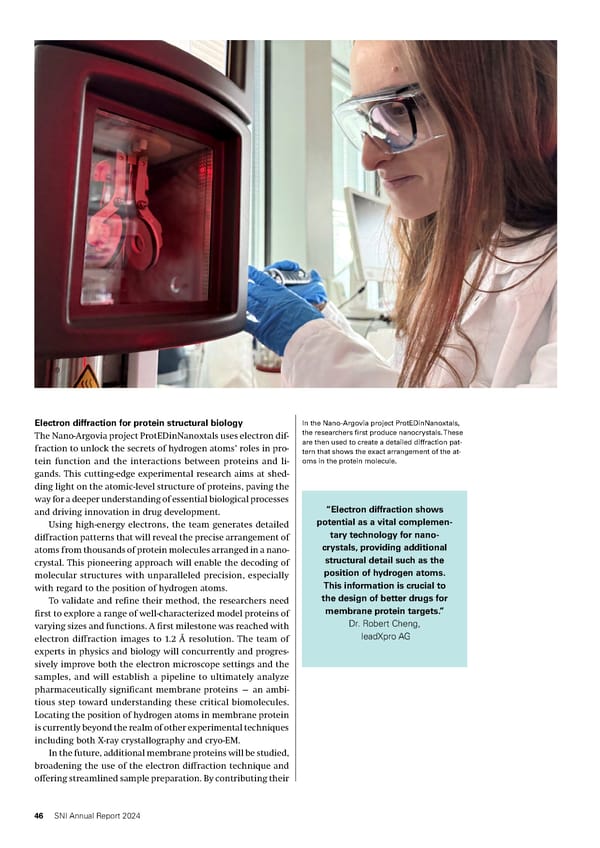Electron diffraction for protein structural biology In the Nano-Argovia project ProtEDinNanoxtals, The Nano-Argovia project ProtEDinNanoxtals uses electron dif- the researchers first produce nanocrystals. These fraction to unlock the secrets of hydrogen atoms’ roles in pro- are then used to create a detailed diffraction pat- tern that shows the exact arrangement of the at- tein function and the interactions between proteins and li- oms in the protein molecule. gands. This cutting-edge experimental research aims at shed- ding light on the atomic-level structure of proteins, paving the way for a deeper understanding of essential biological processes and driving innovation in drug development. “Electron diffraction shows Using high-energy electrons, the team generates detailed potential as a vital complemen- diffraction patterns that will reveal the precise arrangement of tary technology for nano- atoms from thousands of protein molecules arranged in a nano- crystals, providing additional crystal. This pioneering approach will enable the decoding of structural detail such as the molecular structures with unparalleled precision, especially position of hydrogen atoms. with regard to the position of hydrogen atoms. This information is crucial to To validate and refine their method, the researchers need the design of better drugs for first to explore a range of well-characterized model proteins of membrane protein targets.” varying sizes and functions. A first milestone was reached with Dr. Robert Cheng, electron diffraction images to 1.2 Å resolution. The team of leadXpro AG experts in physics and biology will concurrently and progres- sively improve both the electron microscope settings and the samples, and will establish a pipeline to ultimately analyze pharmaceutically significant membrane proteins — an ambi- tious step toward understanding these critical biomolecules. Locating the position of hydrogen atoms in membrane protein is currently beyond the realm of other experimental techniques including both X-ray crystallography and cryo-EM. In the future, additional membrane proteins will be studied, broadening the use of the electron diffraction technique and offering streamlined sample preparation. By contributing their 46 SNI Annual Report 2024
 Annual Report 2024 - Swiss Nanoscience Institute Page 45 Page 47
Annual Report 2024 - Swiss Nanoscience Institute Page 45 Page 47